Bernier-Grand, Carmen T. 2007. Frida: viva la vida = long live life. New York: Marshall Cavendish Children/Marshall Cavendish Corp.
Florian, Douglas. 1994. Bing bang boing: poems and drawings. San Diego: Harcourt Brace.
Franco, Betsy, and Michael Wertz. 2009. A curious collection of cats. Berkeley, Calif: Tricycle.
Franco, Betsy, and Nina Nickles. 2001. Things I have to tell you: poems and writing by teenage girls. Cambridge, MA: Candlewick Press.
Greenfield, Eloise. 1978. Honey, I love, and other love poems. New York: Crowell.
Hopkins, Lee Bennett, and Karen Barbour. 2001. Marvelous math: a book of poems. New York: Aladdin Paperbacks.
Hopkins, Lee Bennett, and Stephen Alcorn. 2000. My America: a poetry atlas of the United States. New York: Simon & Schuster Books for Young Readers.
Janeczko, Paul B. 2004. Blushing: expressions of love in poems & letters. New York: Orchard Books.
Larrick, Nancy, and Ed Young. 1988. Cats are cats: poems. New York: Philomel Books.
Livingston, Myra Cohn, and Antonio Frasconi. 1990. If the owl calls again: a collection of owl poems. New York: M.K. McElderry Books.
Moore, Lilian. 1982. Something new begins--: new and selected poems. New York: Atheneum.
Myers, Walter Dean, and Christopher Myers. 2006. Jazz. New York: Holiday House.
Prelutsky, Jack, and Carin Berger. Behold the Bold Umbrellaphant: And Other Poems. New York: Greenwillow Books, 2006.
Schroeder, Lisa. 2008. I heart you, you haunt me. New York: Simon Pulse.
Viorst, Judith, and Lynne Cherry. 1981. If I were in charge of the world and other worries: poems for children and their parents. New York: Atheneum.
Worth, Valerie, and Natalie Babbitt. 1994. All the small poems and fourteen more. New York: Farrar, Straus, and Giroux.
Monday, April 27, 2009
Friday, April 24, 2009
Module 6- Book Review- Blushing
Blushing: Expressions of Love in Poems & Letters
Janeczko, Paul B. 2004. Blushing: expressions of love in poems & letters. New York: Orchard Books.
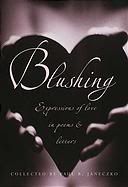
Lovers don’t finally meet somewhere.
They’re in each other all along.
--- Rumi
As the title states, Blushing is a collection of love poems & letters covering all facets of love. This anthology is divided up into five parts: I. The Beginning of Love, II. In Love, III. Alone in Love, IV. The End of Love, & V. Remembering Love. The beginning of each section is highlighted by a letter. Works of over 40 poets, both traditional and contemporary, are displayed. The poets range widely to include Rumi, William Wordsworth, Shakespeare, Lord Byron, Elizabeth Barrett Browning, Nikki Giovanni, Naomi Shihab Nye, and Maya Angelou.
One struggles to find the proper words, the right words to express the deep thoughts and intense emotions exhibit by these poets. Chino Masako conveys new-fangled love in “I Shall Hide Myself:”
I shall hide myself
within the moon of the spring night,
after I have dared to reveal
my love to you.
In “Warmth,” Barton Sutter speaks of being in love:
Sometimes want makes touch too much.
I hold hands over your body
Like someone comes in from the cold
Who takes off his clothes
And hold out his hands to the stove.
Loneliness is the subject of “Separate” by W.S. Merwin:
Your absence has gone through me
Like thread through a needle
Everything I do is stitched with its color.
Emily Dickinson addresses heartbreak in “Heart! We Will Forget Him:”
Heart! We will forget him!
You and I – tonight!
You may forget the warmth he gave—
I will forget the light!
“Longing” by Matthew Arnold is about unrequited love:
Come to me in my dreams, and then
By day I shall be well again.
For then the night will more than pay
The hopeless longing of the day.
All the poems reinforce the topic of their respective section and overall the theme of the book. This collection might not be as well appreciated or understood by young readers or those readers who have never experienced romantic love.
Janeczko, Paul B. 2004. Blushing: expressions of love in poems & letters. New York: Orchard Books.

Lovers don’t finally meet somewhere.
They’re in each other all along.
--- Rumi
As the title states, Blushing is a collection of love poems & letters covering all facets of love. This anthology is divided up into five parts: I. The Beginning of Love, II. In Love, III. Alone in Love, IV. The End of Love, & V. Remembering Love. The beginning of each section is highlighted by a letter. Works of over 40 poets, both traditional and contemporary, are displayed. The poets range widely to include Rumi, William Wordsworth, Shakespeare, Lord Byron, Elizabeth Barrett Browning, Nikki Giovanni, Naomi Shihab Nye, and Maya Angelou.
One struggles to find the proper words, the right words to express the deep thoughts and intense emotions exhibit by these poets. Chino Masako conveys new-fangled love in “I Shall Hide Myself:”
I shall hide myself
within the moon of the spring night,
after I have dared to reveal
my love to you.
In “Warmth,” Barton Sutter speaks of being in love:
Sometimes want makes touch too much.
I hold hands over your body
Like someone comes in from the cold
Who takes off his clothes
And hold out his hands to the stove.
Loneliness is the subject of “Separate” by W.S. Merwin:
Your absence has gone through me
Like thread through a needle
Everything I do is stitched with its color.
Emily Dickinson addresses heartbreak in “Heart! We Will Forget Him:”
Heart! We will forget him!
You and I – tonight!
You may forget the warmth he gave—
I will forget the light!
“Longing” by Matthew Arnold is about unrequited love:
Come to me in my dreams, and then
By day I shall be well again.
For then the night will more than pay
The hopeless longing of the day.
All the poems reinforce the topic of their respective section and overall the theme of the book. This collection might not be as well appreciated or understood by young readers or those readers who have never experienced romantic love.
Module 6 - Poetry Break #6b
Poetry Break 6#b
Introduction: There are many joys to experience in life but with those joys also come disappointments. While we cannot avoid disappointments we can learn from them and move forward. Poetry is a wonderful way to express your feelings and begin the healing process. The following poem addresses a young girl’s heartbreak.

It’s not the size that counts
by Julia Gilliam, age 14
My hair blows in the wind, because it is growing regrets.
My eyes slant because I’m laughing, laughing at you.
My fist clench because I’m ready to fight, ready to fight you.
My shoulders are small, yet big enough to shrug you off.
My feet are tiny, yet big enough to walk away from you.
My hands are small, yet big enough to wave good-bye to you.
Smoke is coming from my mouth, because the fire in my heart for you
is out.
[written in chemistry]
[From: From: Things I have to tell you: poems and writing by teenage girls. By Betsy Franco and Nina Nickles, Candlewick Press, 2001.]
Extension: Have you students write a poem to express how they are feeling right now with no pressure to share with the class. Explain that every emotion both positive and negative can be expressed through poetry. As an alternate assignment have your students paint or draw how they are feeling.
Introduction: There are many joys to experience in life but with those joys also come disappointments. While we cannot avoid disappointments we can learn from them and move forward. Poetry is a wonderful way to express your feelings and begin the healing process. The following poem addresses a young girl’s heartbreak.

It’s not the size that counts
by Julia Gilliam, age 14
My hair blows in the wind, because it is growing regrets.
My eyes slant because I’m laughing, laughing at you.
My fist clench because I’m ready to fight, ready to fight you.
My shoulders are small, yet big enough to shrug you off.
My feet are tiny, yet big enough to walk away from you.
My hands are small, yet big enough to wave good-bye to you.
Smoke is coming from my mouth, because the fire in my heart for you
is out.
[written in chemistry]
[From: From: Things I have to tell you: poems and writing by teenage girls. By Betsy Franco and Nina Nickles, Candlewick Press, 2001.]
Extension: Have you students write a poem to express how they are feeling right now with no pressure to share with the class. Explain that every emotion both positive and negative can be expressed through poetry. As an alternate assignment have your students paint or draw how they are feeling.
Module 6 - Poetry Break #6a
Poetry Break #6a
Introduction: Body image is a very serious and sensitive issue for teens especially for young women. Our world sends the damaging message that one is not valued unless they are thin and attractive. Young women are pressured by society, their community, their peers, and sadly sometimes even their parents or other family members/adults. This strain is often on top of other demands such as excelling in school and performing well in sports and other extracurricular activities. The following poem expresses how one young woman feels the pressure to be perfect.

Be Perfect
by Laura Veuve
Be Perfect
Perfect brain
Perfect personality
Perfect face
Perfect body
Perfect body
Perfect body
--Shocking studies show eating disorders
on the rise in teenage girls—
Shocking
Bullshit
You should have seen this coming
You raised me
Your society screwed me up
I read your hypocritical magazines
I went to your schools
I dealt with your sons’ running commentaries
on
my face
my weight
my breast
my body
Shocking
Bullshit
My parents can’t protect me
My friends can’t protect me
My wonderful, loving,
ignorant community can’t protect me
So I protect them
I have to cope to survive
Why hurt them too?
What?
Oh, I’m fine, Mom
~ smile ~
Be Perfect
Bullshit
[From: Things I have to tell you: poems and writing by teenage girls. By Betsy Franco and Nina Nickles, Candlewick Press, 2001.]
Extension: Let you students know that Ms. Veuve was 15 years old when she wrote this poem. Her feelings reflect how many young people feel about body image. Let your students know that there are no benefits from focusing on what they believe are their flaws. Ask them to list 5-10 good qualities they have (they do not have share this with class). Encourage your class to get plenty of exercise, even if it is only a 10 minute walk, and to make healthier food choices such as eating more fruits and vegetables. Ask them to spend less time in front of the mirror and to treat their bodies with respect and kindness.
Introduction: Body image is a very serious and sensitive issue for teens especially for young women. Our world sends the damaging message that one is not valued unless they are thin and attractive. Young women are pressured by society, their community, their peers, and sadly sometimes even their parents or other family members/adults. This strain is often on top of other demands such as excelling in school and performing well in sports and other extracurricular activities. The following poem expresses how one young woman feels the pressure to be perfect.

Be Perfect
by Laura Veuve
Be Perfect
Perfect brain
Perfect personality
Perfect face
Perfect body
Perfect body
Perfect body
--Shocking studies show eating disorders
on the rise in teenage girls—
Shocking
Bullshit
You should have seen this coming
You raised me
Your society screwed me up
I read your hypocritical magazines
I went to your schools
I dealt with your sons’ running commentaries
on
my face
my weight
my breast
my body
Shocking
Bullshit
My parents can’t protect me
My friends can’t protect me
My wonderful, loving,
ignorant community can’t protect me
So I protect them
I have to cope to survive
Why hurt them too?
What?
Oh, I’m fine, Mom
~ smile ~
Be Perfect
Bullshit
[From: Things I have to tell you: poems and writing by teenage girls. By Betsy Franco and Nina Nickles, Candlewick Press, 2001.]
Extension: Let you students know that Ms. Veuve was 15 years old when she wrote this poem. Her feelings reflect how many young people feel about body image. Let your students know that there are no benefits from focusing on what they believe are their flaws. Ask them to list 5-10 good qualities they have (they do not have share this with class). Encourage your class to get plenty of exercise, even if it is only a 10 minute walk, and to make healthier food choices such as eating more fruits and vegetables. Ask them to spend less time in front of the mirror and to treat their bodies with respect and kindness.
Friday, April 10, 2009
Module 5 - Book Review - Behold the Bold Umbrellaphant
Behold the Bold Umbrellaphant and Other Poems
Prelutsky, Jack, and Carin Berger. 2006. Behold the bold umbrellaphant: and other poems. New York: Greenwillow Books.

The clever and witty Jack Prelutsky never ceases to amaze. His Behold the Bold Umbrellaphant is a collection of delightful and silly poems about creatures that are a unique combination of animal and object. Among the critters springing out of Prelutsky’s creative genius are pop-up toadsters, shoehornets, hatchickens, the ocelock, and the keymonkey. The poems display a wide variety of emotions and spark the imagination of young and older readers alike.
The ballpoint penguins enjoy writing:
The BALLPOINT PENGUINS, black and white,
Do little else but write and write.
Although they’ve nothing much to say,
They write and write it anyway.
The Lynx of Chain is always on the run and the Bizarre Alarmadillos are constantly upset. While the Tearful Zipperpotamuses are in constant pain:
They have zippers on their bellies,
On their legs and heads and backs,
But their zippers keep unzipping,
So they rarely can relax.
Carin Berger’s illustrations are eye-catching collages of these fascinating critters in their native habitat. Appealing and stimulating, these images are very much a part of the poems they accompany. Behold the Bold Umbrellaphant is a must have for all personal libraries.
Prelutsky, Jack, and Carin Berger. 2006. Behold the bold umbrellaphant: and other poems. New York: Greenwillow Books.

The clever and witty Jack Prelutsky never ceases to amaze. His Behold the Bold Umbrellaphant is a collection of delightful and silly poems about creatures that are a unique combination of animal and object. Among the critters springing out of Prelutsky’s creative genius are pop-up toadsters, shoehornets, hatchickens, the ocelock, and the keymonkey. The poems display a wide variety of emotions and spark the imagination of young and older readers alike.
The ballpoint penguins enjoy writing:
The BALLPOINT PENGUINS, black and white,
Do little else but write and write.
Although they’ve nothing much to say,
They write and write it anyway.
The Lynx of Chain is always on the run and the Bizarre Alarmadillos are constantly upset. While the Tearful Zipperpotamuses are in constant pain:
They have zippers on their bellies,
On their legs and heads and backs,
But their zippers keep unzipping,
So they rarely can relax.
Carin Berger’s illustrations are eye-catching collages of these fascinating critters in their native habitat. Appealing and stimulating, these images are very much a part of the poems they accompany. Behold the Bold Umbrellaphant is a must have for all personal libraries.
Module 5 - Poetry Break #5b
Poetry Break #5b
Introduction: Sometimes poetry and artwork are inseparable as it is with concerte poems. Expose your students to the beauty and flexibility of concerte poems.
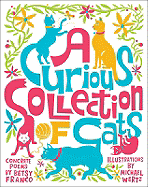
her royal highness
(concerte poem- see image below)
by Besty Franco
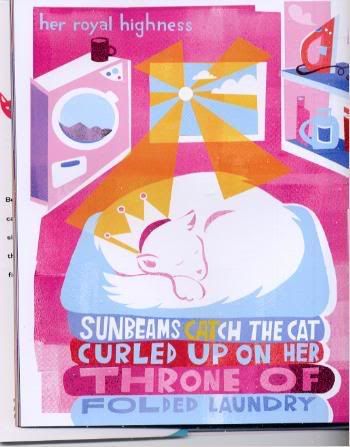
Sunbeams Catch The Cat/ Curled Up On Her/ Throne Of/ Folded Laundry
[From: A curious collection of cats. By Besty Franco and Michael Wertz, Tricycle, 2009]
Extension: Go head, dive right in, and treat the class to the whole book. Ask your students if they have cats or other pets at home; ask your students if any of the poems remind them of their pets. You can also have your students create their own concerte poems.
For fun check out this clip: http://s68.photobucket.com/albums/i35/owl1017/?action=view¤t=PICT0053.flv
Introduction: Sometimes poetry and artwork are inseparable as it is with concerte poems. Expose your students to the beauty and flexibility of concerte poems.

her royal highness
(concerte poem- see image below)
by Besty Franco

Sunbeams Catch The Cat/ Curled Up On Her/ Throne Of/ Folded Laundry
[From: A curious collection of cats. By Besty Franco and Michael Wertz, Tricycle, 2009]
Extension: Go head, dive right in, and treat the class to the whole book. Ask your students if they have cats or other pets at home; ask your students if any of the poems remind them of their pets. You can also have your students create their own concerte poems.
For fun check out this clip: http://s68.photobucket.com/albums/i35/owl1017/?action=view¤t=PICT0053.flv
Module 5 - Poetry Break #5a
Poetry Break #5a
Introduction: Poems that contain a refrain are great to present to children. Read the poem first. Then invite them to participate in the second reading by reciting the refrain every time it appears.
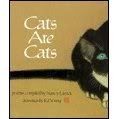
Wanted—A Witch’s Cat
by Shelagh McGee
Wanted—a witch’s cat, (refrain)
Must have vigor and spite,
Be expert at hissing,
And good in a flight,
And have balance and poise
On a broomstick at night.
Wanted—a witch’s cat, (refrain)
Must have hypnotic eyes
To tantalize victims
And mesmerize spies,
And be adept
At scanning the skies.
Wanted—a witch’s cat, (refrain)
With a sly, cunning smile,
And knowledge of spells
And a good deal of guile,
With a fairly hot temper
And plenty of bile.
Wanted—a witch’s cat, (refrain)
Who’s not afraid to fly,
For a cat with strong nerves
The salary’s high
Wanted—a witch’s cat;
Only the best need apply.
[From: Cats are cats: poems. By Nancy Larrick and Ed Young, Philomel Books, 1988.]
Extension: Present to the class another cat poem with a refrain such as "Chang McTang McQuarter Cat" by John Ciardi or share a poem that contains a chorus like "Rat for Lunch" by Jack Prelutsky.
Introduction: Poems that contain a refrain are great to present to children. Read the poem first. Then invite them to participate in the second reading by reciting the refrain every time it appears.

Wanted—A Witch’s Cat
by Shelagh McGee
Wanted—a witch’s cat, (refrain)
Must have vigor and spite,
Be expert at hissing,
And good in a flight,
And have balance and poise
On a broomstick at night.
Wanted—a witch’s cat, (refrain)
Must have hypnotic eyes
To tantalize victims
And mesmerize spies,
And be adept
At scanning the skies.
Wanted—a witch’s cat, (refrain)
With a sly, cunning smile,
And knowledge of spells
And a good deal of guile,
With a fairly hot temper
And plenty of bile.
Wanted—a witch’s cat, (refrain)
Who’s not afraid to fly,
For a cat with strong nerves
The salary’s high
Wanted—a witch’s cat;
Only the best need apply.
[From: Cats are cats: poems. By Nancy Larrick and Ed Young, Philomel Books, 1988.]
Extension: Present to the class another cat poem with a refrain such as "Chang McTang McQuarter Cat" by John Ciardi or share a poem that contains a chorus like "Rat for Lunch" by Jack Prelutsky.
Friday, March 27, 2009
Module 4 - Book Review - Marvelous Math
Marvelous Math
Hopkins, Lee Bennett, and Karen Barbour. 2001. Marvelous math: a book of poems. New York: Aladdin Paperbacks.
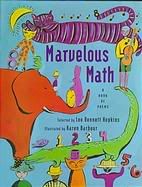
Numbers come to life in this wonderful collection of math poems. Mathematics takes on fresh, new meaning for readers through questions and concepts explored in the 16 poems that comprise this anthology. The poems, a collection of rhyme and free verse, are consistent in quality and reinforce this book’s purpose in showing math can be fun and exciting. A variety of thoughts and emotions are displayed from inquisitive, “Marvelous Math” to comforting, “Math makes me feel safe” from sad, “Hourglass” to silly, “SOS” by Beverly McLoughland:
Sammy’s head is pounding—
Sammy’s in pain—
A long division’s got
Stuck in his brain—
The featured poets are all contemporary and many of them are well known. Aside from anthologist Hopkins, there are poems by Rebecca Kai Dotlich, Betsy Franco, and Janet S. Wong (to name a few). Also incorporated are works by late poets Mary O’Neill and David McCord. Several poems first appeared in other poetry books. For example, Karla Kuskin’s “Counting Birds” is an excerpt from Near the Window Tree:
Instead of counting herds of sheep
Sometimes when I am going to sleep
I think of names of birds I love—
Merlin, mud hen, morning dove…
The accompanying watercolor and acrylic paintings by Karen Barbour are extremely inviting; they are abstract and vivid. Their surrealism is the perfect poetry companion. At times the art seems to dominate the page, but without the poetry it would have no meaning. Marvelous Math is a fantastic treat for a math class poetry break or for no reason at all. Young readers will enjoy this compilation.
Hopkins, Lee Bennett, and Karen Barbour. 2001. Marvelous math: a book of poems. New York: Aladdin Paperbacks.

Numbers come to life in this wonderful collection of math poems. Mathematics takes on fresh, new meaning for readers through questions and concepts explored in the 16 poems that comprise this anthology. The poems, a collection of rhyme and free verse, are consistent in quality and reinforce this book’s purpose in showing math can be fun and exciting. A variety of thoughts and emotions are displayed from inquisitive, “Marvelous Math” to comforting, “Math makes me feel safe” from sad, “Hourglass” to silly, “SOS” by Beverly McLoughland:
Sammy’s head is pounding—
Sammy’s in pain—
A long division’s got
Stuck in his brain—
The featured poets are all contemporary and many of them are well known. Aside from anthologist Hopkins, there are poems by Rebecca Kai Dotlich, Betsy Franco, and Janet S. Wong (to name a few). Also incorporated are works by late poets Mary O’Neill and David McCord. Several poems first appeared in other poetry books. For example, Karla Kuskin’s “Counting Birds” is an excerpt from Near the Window Tree:
Instead of counting herds of sheep
Sometimes when I am going to sleep
I think of names of birds I love—
Merlin, mud hen, morning dove…
The accompanying watercolor and acrylic paintings by Karen Barbour are extremely inviting; they are abstract and vivid. Their surrealism is the perfect poetry companion. At times the art seems to dominate the page, but without the poetry it would have no meaning. Marvelous Math is a fantastic treat for a math class poetry break or for no reason at all. Young readers will enjoy this compilation.
Module 4- Poetry Break #4b
Poetry Break #4b
Introduction: Pairing up biography poems with another class activity is a wonderful way to get your class interested in poetry. The following Biopoem about Mexican painter Frida Kahlo can be shared for a variety of reasons: to celebrate Women’s History Month, to pair with an art/art history lesson, to read before a field trip to an art museum, or to couple with a biography about Frida Kahlo.
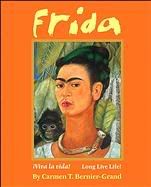
My Birth
by Carmen T. Bernier-Grand
My birth name is Magdalena Carmen Frida Kahlo y Calderon.
But I often say I am Frieda, German for “peace.”
My birthday is July 6th 1907.
But I often say I was born in 1910,
daughter of the Mexican Revolution.
My birthplace is my grandmother’s house in Coyoacan, Mexico.
But I often say I was born a block away,
in the U-shaped Blue House of my childhood,
a white building, until I painted it deep blue.
[From: Frida: viva la vida = long live life. By Carmen T. Bernier-Grand, Marshall Cavendish Children/Marshall Cavendish Corp, 2007.]
Extension: Have your students write their own Biopoem. The poem can be autobiographical in nature or about another person, real or fictional. Give your students the option of sharing the poem with the rest of the class.
Introduction: Pairing up biography poems with another class activity is a wonderful way to get your class interested in poetry. The following Biopoem about Mexican painter Frida Kahlo can be shared for a variety of reasons: to celebrate Women’s History Month, to pair with an art/art history lesson, to read before a field trip to an art museum, or to couple with a biography about Frida Kahlo.

My Birth
by Carmen T. Bernier-Grand
My birth name is Magdalena Carmen Frida Kahlo y Calderon.
But I often say I am Frieda, German for “peace.”
My birthday is July 6th 1907.
But I often say I was born in 1910,
daughter of the Mexican Revolution.
My birthplace is my grandmother’s house in Coyoacan, Mexico.
But I often say I was born a block away,
in the U-shaped Blue House of my childhood,
a white building, until I painted it deep blue.
[From: Frida: viva la vida = long live life. By Carmen T. Bernier-Grand, Marshall Cavendish Children/Marshall Cavendish Corp, 2007.]
Extension: Have your students write their own Biopoem. The poem can be autobiographical in nature or about another person, real or fictional. Give your students the option of sharing the poem with the rest of the class.
Module 4 - Poetry Break #4a
Poetry Break #4a
Introduction: On a nice, fresh, spring day bring your class outside (make sure you have administration approval) for a breath of fresh air and a poetry break.
Move Over
by Lilian Moore
Big
burly
bumblebee
buzzing
through the grass,
move over.
Black and
yellow
clover rover,
let me pass.
Fat and
furry
rummblebee
loud on the
wing
let me
hurry
past
your string.
[From: Something New Begins: New and Selected Poems. By Lilian Moore, Atheneum, 1982.]
Extension: Have the class bring drawing pads, pencils, and something to color with; have them draw the bumblebee or something else if they’d like. Share another poem such as Spring Talk by David McCord.
Introduction: On a nice, fresh, spring day bring your class outside (make sure you have administration approval) for a breath of fresh air and a poetry break.
Move Over
by Lilian Moore
Big
burly
bumblebee
buzzing
through the grass,
move over.
Black and
yellow
clover rover,
let me pass.
Fat and
furry
rummblebee
loud on the
wing
let me
hurry
past
your string.
[From: Something New Begins: New and Selected Poems. By Lilian Moore, Atheneum, 1982.]
Extension: Have the class bring drawing pads, pencils, and something to color with; have them draw the bumblebee or something else if they’d like. Share another poem such as Spring Talk by David McCord.
Friday, March 6, 2009
Module 3- Book Review- I heart you, you haunt me
I heart you, you haunt me
Schroeder, Lisa. 2008. I heart you, you haunt me. New York: Simon Pulse.
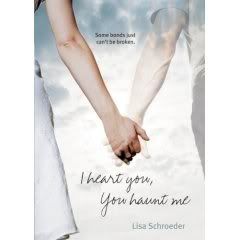
Set in the present day this verse novel is about a 15-year old girl named Ava. Ava like many teenage girls her age longs to get her drivers license, is saving up for a car, and likes going to the mall with her best friend. However unlike other girls her boyfriend Jackson just died, it is all Ava’s fault and now he’s back as ghost! Ava is happy to have Jackson back in her life but what kind of life could they possibly have together?
Written in narrative free verse, the novel is peppered with flashbacks that tell how Ava and Jackson met and give the reader an understanding of their life together. Schroeder frequently incorporates music into the story to establish the mood:
The CD player turns on
You’re The One, by Sugarcult
A blue bouncy ball
rolls across the floor.
I pick it up
There’s scribbled writing,
hard to read.
I figure out it says:
Don’t be blue,
I love you!
Schroeder does an excellent job of conveying Ava's vast and strong emotions. The reader’s senses are ignited as they experience Ava’s feelings of love lost, love found, confusion, entrapment, guilt, anger, endless love, peace, and hope. It is these feelings that not only move the story but give it its power.
Schroeder, Lisa. 2008. I heart you, you haunt me. New York: Simon Pulse.

Set in the present day this verse novel is about a 15-year old girl named Ava. Ava like many teenage girls her age longs to get her drivers license, is saving up for a car, and likes going to the mall with her best friend. However unlike other girls her boyfriend Jackson just died, it is all Ava’s fault and now he’s back as ghost! Ava is happy to have Jackson back in her life but what kind of life could they possibly have together?
Written in narrative free verse, the novel is peppered with flashbacks that tell how Ava and Jackson met and give the reader an understanding of their life together. Schroeder frequently incorporates music into the story to establish the mood:
The CD player turns on
You’re The One, by Sugarcult
A blue bouncy ball
rolls across the floor.
I pick it up
There’s scribbled writing,
hard to read.
I figure out it says:
Don’t be blue,
I love you!
Schroeder does an excellent job of conveying Ava's vast and strong emotions. The reader’s senses are ignited as they experience Ava’s feelings of love lost, love found, confusion, entrapment, guilt, anger, endless love, peace, and hope. It is these feelings that not only move the story but give it its power.
Module 3 - Poetry Break #3b
Poetry Break #3b
Introduction: Many children grown up falsely believing if a poem does not rhyme then it is not a poem. Poems are about expressing thoughts and emotions. The element of rhyme is optional in poetry. Read following poem to your class:

My Cat
by Judith Viorst
My cat isn’t stuck up,
Even though
He’s the handsomest cat in
the world,
And smart,
And brave,
And climbs the highest trees.
My cat will sit on your lap and
let you pet him.
He won’t mind.
He thinks human beings are
Almost as good
As he is.
[From: If I were in charge of the world and other worries. By Judith Viorst and Lynne Cherry, Atheneum, 1981.]
Extension: There are many forms of poetry that do not rhyme (i.e. free verse, haiku, Tanka, and Sestina). Read some more examples to your class. For an alternate activity have them create a free verse poem on the topic of their choice.
Introduction: Many children grown up falsely believing if a poem does not rhyme then it is not a poem. Poems are about expressing thoughts and emotions. The element of rhyme is optional in poetry. Read following poem to your class:

My Cat
by Judith Viorst
My cat isn’t stuck up,
Even though
He’s the handsomest cat in
the world,
And smart,
And brave,
And climbs the highest trees.
My cat will sit on your lap and
let you pet him.
He won’t mind.
He thinks human beings are
Almost as good
As he is.
[From: If I were in charge of the world and other worries. By Judith Viorst and Lynne Cherry, Atheneum, 1981.]
Extension: There are many forms of poetry that do not rhyme (i.e. free verse, haiku, Tanka, and Sestina). Read some more examples to your class. For an alternate activity have them create a free verse poem on the topic of their choice.
Module 3 - Poetry Break #3a
Poetry Break #3a
Introduction: There is a strong correlation between young children’s understanding of sounds of language and literacy rates. Share this alliteration poem with your students.

Riddle-Me Rhyme
By David McCord
Riddle-me, Riddle-me, Ree,
An owl is in that tree.
Riddle-me, Riddle-me, Ro,
He’s there and he won’t go.
Riddle-me, Riddle-me, Ree,
“I’m staying here,” says he.
Riddle-me, Riddle-me, Ro,
“Caw-caw,” caws the crow.
Riddle-me, Riddle-me, Ree,
An owl by day can’t see.
Riddle-me, Riddle-me, Ro,
But he can hear the crow.
Riddle-me, Riddle-me, Ree,
Not one crow; now but three.
Riddle-me, Riddle-me, Ro,
Now five or six or so.
Riddle-me, Riddle-me, Ree,
Nine, then crows round that tree.
Riddle-me, Riddle-me, Ro,
Now forty. He won’t go.
Riddle-me, Riddle-me, Ree,
How deafening crows can be!
Riddle-me, Riddle-me, Ro,
The owl’s still saying “no!”
Riddle-me, Riddle-me, Ree,
Did something leave the tree?
Riddle-me, Riddle-me, Ro,
You’ll have to ask the crow.
Riddle-me, Riddle-me, Ree,
The crows are following he…
Riddle-me, Riddle-me, Ro,
Are following him.
I know.
[From: If the owl calls again: a collection of owl poems. By Myra Cohn Livingston and Antonio Frasconi, McElderry Books, 1990.]
Extension: Take alliteration to the extreme and share some tongue twisters with your students such as “Peter Piper picked a peck of pickled peppers,” “She sells seashells by the seashore,” and “Betty Botter had some butter.” Or share some less concentrated examples of alliteration such as “The Tyger” and “Rime of the Ancient Mariner.”
Introduction: There is a strong correlation between young children’s understanding of sounds of language and literacy rates. Share this alliteration poem with your students.

Riddle-Me Rhyme
By David McCord
Riddle-me, Riddle-me, Ree,
An owl is in that tree.
Riddle-me, Riddle-me, Ro,
He’s there and he won’t go.
Riddle-me, Riddle-me, Ree,
“I’m staying here,” says he.
Riddle-me, Riddle-me, Ro,
“Caw-caw,” caws the crow.
Riddle-me, Riddle-me, Ree,
An owl by day can’t see.
Riddle-me, Riddle-me, Ro,
But he can hear the crow.
Riddle-me, Riddle-me, Ree,
Not one crow; now but three.
Riddle-me, Riddle-me, Ro,
Now five or six or so.
Riddle-me, Riddle-me, Ree,
Nine, then crows round that tree.
Riddle-me, Riddle-me, Ro,
Now forty. He won’t go.
Riddle-me, Riddle-me, Ree,
How deafening crows can be!
Riddle-me, Riddle-me, Ro,
The owl’s still saying “no!”
Riddle-me, Riddle-me, Ree,
Did something leave the tree?
Riddle-me, Riddle-me, Ro,
You’ll have to ask the crow.
Riddle-me, Riddle-me, Ree,
The crows are following he…
Riddle-me, Riddle-me, Ro,
Are following him.
I know.
[From: If the owl calls again: a collection of owl poems. By Myra Cohn Livingston and Antonio Frasconi, McElderry Books, 1990.]
Extension: Take alliteration to the extreme and share some tongue twisters with your students such as “Peter Piper picked a peck of pickled peppers,” “She sells seashells by the seashore,” and “Betty Botter had some butter.” Or share some less concentrated examples of alliteration such as “The Tyger” and “Rime of the Ancient Mariner.”
Friday, February 20, 2009
Module 2- Book Review- Jazz
Jazz
Myers, Walter Dean, and Christopher Myers. 2006. Jazz. New York: Holiday House. ISBN 0823421732

The poetry of Jazz is music to the eyes. What it lacks in humor, it makes up for in heart. There are strong and powerful emotions experienced in Jazz. These poems make the reader want to break out in song and dance. Even “Good-Bye to Old Bob Johnson” will have one thumping along:
The drums are solemn as we walk along
The banjo twangs a gospel song
Let the deacons preach and the widow cry
While a sad horn sounds a last good-bye
Good-bye to old Bob Johnson
Good-bye
The poetry is balanced as Myers uses a variety of verse and structure from rhyming to free verse as in “Jazz:”
Start with rhythm
Start with the heart
Drumming in tongues
Along the Nile
Jazz is well organized and uniquely designed. There is a brief introduction 2-page introduction to the history of Jazz. A glossary of Jazz terms and a Jazz time line conclude the text. Myers uses cursive to place emphasis on certain words and sounds. The acrylic paintings complement the poems and help to bring them to life (not that they are in need of help). Appropriate for children the only downside is the book is too short. Myers leaves the reader wanting more tapping their toes to the cadence and beat.
Myers, Walter Dean, and Christopher Myers. 2006. Jazz. New York: Holiday House. ISBN 0823421732

The poetry of Jazz is music to the eyes. What it lacks in humor, it makes up for in heart. There are strong and powerful emotions experienced in Jazz. These poems make the reader want to break out in song and dance. Even “Good-Bye to Old Bob Johnson” will have one thumping along:
The drums are solemn as we walk along
The banjo twangs a gospel song
Let the deacons preach and the widow cry
While a sad horn sounds a last good-bye
Good-bye to old Bob Johnson
Good-bye
The poetry is balanced as Myers uses a variety of verse and structure from rhyming to free verse as in “Jazz:”
Start with rhythm
Start with the heart
Drumming in tongues
Along the Nile
Jazz is well organized and uniquely designed. There is a brief introduction 2-page introduction to the history of Jazz. A glossary of Jazz terms and a Jazz time line conclude the text. Myers uses cursive to place emphasis on certain words and sounds. The acrylic paintings complement the poems and help to bring them to life (not that they are in need of help). Appropriate for children the only downside is the book is too short. Myers leaves the reader wanting more tapping their toes to the cadence and beat.
Module 2 - Poetry Break #2b
Poetry Break #2b
Introduction: An interesting activity when recesses has been canceled or during homeroom time. Talk to your class about games children played before the information age such as “red light, green light,” “musical chairs,” “orange battle,” “I spy,” “duck, duck, goose” and “jacks.” End by sharing the poem “jacks.”
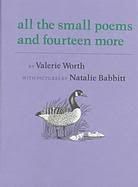
jacks
by Valerie Worth
The way
Jack nest
Together in
The hand,
Or cupped
Between
Two palms,
Jingled up
And thrown,
Land in a
Loose starry
Cluster,
Seems luxury
Enough,
Without the
Further bliss
Of their
Slender
Iridescent
Luster.
[From: Worth, Valerie, and Natalie Babbitt. 1994. All the small poems and fourteen more. New York: Farrar, Straus, and Giroux.]
Extension: Follow up by sharing the following poems also by Valerie Worth: “marbles,” “kite,” and “kaleidoscope.” These are objects children use to play with. If you have these artifacts bring them in to show and tell with the class.
Introduction: An interesting activity when recesses has been canceled or during homeroom time. Talk to your class about games children played before the information age such as “red light, green light,” “musical chairs,” “orange battle,” “I spy,” “duck, duck, goose” and “jacks.” End by sharing the poem “jacks.”

jacks
by Valerie Worth
The way
Jack nest
Together in
The hand,
Or cupped
Between
Two palms,
Jingled up
And thrown,
Land in a
Loose starry
Cluster,
Seems luxury
Enough,
Without the
Further bliss
Of their
Slender
Iridescent
Luster.
[From: Worth, Valerie, and Natalie Babbitt. 1994. All the small poems and fourteen more. New York: Farrar, Straus, and Giroux.]
Extension: Follow up by sharing the following poems also by Valerie Worth: “marbles,” “kite,” and “kaleidoscope.” These are objects children use to play with. If you have these artifacts bring them in to show and tell with the class.
Module 2 - Poetry Break #2a
Poetry Break #2a
Introduction: Begin by starting a discussion with the class about their pets at home or pets they would like to own. Shift the conversation and ask them to imagine outlandish and silly pets. Ask if anyone would like to have a dragon as a pet. Then begin reading the poem “A Fire-Breathing Dragon.”
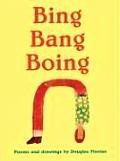
A Fire-Breathing Dragon
by Douglas Florian
A fire-breathing dragon
Would make a precious pet—
It’s great for grilling hot dogs
And drying clothes all wet.
It gladly guards the house and yard
From burglars in the street.
On winter nights how it delights
To warm your frozen feet.
It eats unwanted guest for lunch
And munches noisy neighbors
Insistent salesmen at the door,
A hungry dragon savors.
A dragon is a noble beast,
A perfect primal pet.
The only trick
Is when it’s sick,
Don’t let it eat the vet.
[From: Bing bang boing: poems and drawings. By Douglas Florian, Harcourt Brace, 1994]
Extension: Break out the crayons, pencil colors, markers, watercolors, construction paper, and glitter; have the class bring their envisioned dragons to life. You may prefer to supply a dragon template for younger children. Students can also create their own dragon poem as an alternate activity.
Introduction: Begin by starting a discussion with the class about their pets at home or pets they would like to own. Shift the conversation and ask them to imagine outlandish and silly pets. Ask if anyone would like to have a dragon as a pet. Then begin reading the poem “A Fire-Breathing Dragon.”

A Fire-Breathing Dragon
by Douglas Florian
A fire-breathing dragon
Would make a precious pet—
It’s great for grilling hot dogs
And drying clothes all wet.
It gladly guards the house and yard
From burglars in the street.
On winter nights how it delights
To warm your frozen feet.
It eats unwanted guest for lunch
And munches noisy neighbors
Insistent salesmen at the door,
A hungry dragon savors.
A dragon is a noble beast,
A perfect primal pet.
The only trick
Is when it’s sick,
Don’t let it eat the vet.
[From: Bing bang boing: poems and drawings. By Douglas Florian, Harcourt Brace, 1994]
Extension: Break out the crayons, pencil colors, markers, watercolors, construction paper, and glitter; have the class bring their envisioned dragons to life. You may prefer to supply a dragon template for younger children. Students can also create their own dragon poem as an alternate activity.
Friday, February 6, 2009
Module 1- Book Review- My America: A Poetry Atlas of the United States
Hopkins, Lee Bennett, and Stephen Alcorn. 2000. My America: a poetry atlas of the United States. New York: Simon & Schuster Books for Young Readers. ISBN 0689812477
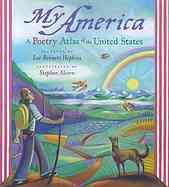
This anthology, a collection of poems celebrating America, ignites the imaginations of the young by delighting the senses. The poems are vivid and diverse yet balanced in quality. They vary in length ranging from a few sentences short to several verses long. They also differ in mood and tone from the silly and light-hearted “Idaho” by Kaye Starbird to the serious and dramatic Alabama Earth. Works from know poets (Florian, Hughes) as well as lesser known poets (Hubbell, Shields) are represented. Some of the poems are written in verse with rhyming schemes such as Anne LeMieux’s “Gulls and Buoys:”
Gulls swoop, gulls soar,
Flocking, flying, gulls galore,
Gulls wheel, gulls wing,
Clamorous chorus, gulls sing.
Gulls squawk, gulls screech
By the buoys, on the beach.
Gulls gather, gulls together,
Raucous caucus, birds of a feather.
While other poems are abstract and penned in free verse like “Cactus” by April Halprin Wayland:
“Don’t dare come near’”
it says
with spike
with spear
with crossbow
poised to pierce…
beware!
Hopkins’ My America is well organized and designed. The poems are group according to region (i.e. The Great Lakes States, The Southwest States). Beautiful casein paintings accompany and compliment each poem. The wonderful casein maps introduce the states of each region. A few brief facts on each state are also presented in the introduction. My America is a treasure to share with others.

This anthology, a collection of poems celebrating America, ignites the imaginations of the young by delighting the senses. The poems are vivid and diverse yet balanced in quality. They vary in length ranging from a few sentences short to several verses long. They also differ in mood and tone from the silly and light-hearted “Idaho” by Kaye Starbird to the serious and dramatic Alabama Earth. Works from know poets (Florian, Hughes) as well as lesser known poets (Hubbell, Shields) are represented. Some of the poems are written in verse with rhyming schemes such as Anne LeMieux’s “Gulls and Buoys:”
Gulls swoop, gulls soar,
Flocking, flying, gulls galore,
Gulls wheel, gulls wing,
Clamorous chorus, gulls sing.
Gulls squawk, gulls screech
By the buoys, on the beach.
Gulls gather, gulls together,
Raucous caucus, birds of a feather.
While other poems are abstract and penned in free verse like “Cactus” by April Halprin Wayland:
“Don’t dare come near’”
it says
with spike
with spear
with crossbow
poised to pierce…
beware!
Hopkins’ My America is well organized and designed. The poems are group according to region (i.e. The Great Lakes States, The Southwest States). Beautiful casein paintings accompany and compliment each poem. The wonderful casein maps introduce the states of each region. A few brief facts on each state are also presented in the introduction. My America is a treasure to share with others.
Module 1- Poetry Break #1b
Introduction:
This poem is perfect to share with your students when they appear to be tired and out of focus. Stop the current lesson and take a break with “Rope Rhyme.” The poem’s excitement and energy will rejuvenate the class.
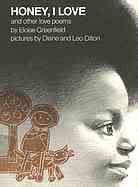
Rope Rhyme
by Eloise Greenfield
Get set, ready now, jump right in
Bounce and kick and giggle and spin
Listen to the rope when it hits the ground
Listen to that clappedy-slappedy sound
Jump right up when it tells you to
Come back down, whatever you do
Count to a hundred, count by ten
Start to count all over again
That’s what jumping is all about
Get set, ready now,
jump
right
out!
[From: Honey, I love, and other love poems. by Eloise Greenfield, Crowell, 1978]
Extension:
Repeat for good measure. Students can form two large groups, each taking turns reading alternative lines. Ask them about some of their favorite playground past-times.
This poem is perfect to share with your students when they appear to be tired and out of focus. Stop the current lesson and take a break with “Rope Rhyme.” The poem’s excitement and energy will rejuvenate the class.

Rope Rhyme
by Eloise Greenfield
Get set, ready now, jump right in
Bounce and kick and giggle and spin
Listen to the rope when it hits the ground
Listen to that clappedy-slappedy sound
Jump right up when it tells you to
Come back down, whatever you do
Count to a hundred, count by ten
Start to count all over again
That’s what jumping is all about
Get set, ready now,
jump
right
out!
[From: Honey, I love, and other love poems. by Eloise Greenfield, Crowell, 1978]
Extension:
Repeat for good measure. Students can form two large groups, each taking turns reading alternative lines. Ask them about some of their favorite playground past-times.
Module 1- Poetry Break #1a
Introduction:
This poem is a little silly and fun. Read as nice break in between lesson or after lunch or recess. Read it twice and then have the class join in on the third reading.

Mr. Cook
by Douglas Florian
Mr. Cook’s in love with books—
He piles them wall to wall.
On breezy days they gently sway,
And with a sneeze they fall.
He reads all day, great novels and plays,
Reciting to Mrs. Cook.
But as he feared, she’s disappeared.
And who knows where to look?
[From: Bing bang boing: poems and drawings. By Douglas Florian, Harcourt Brace, 1994]
Extension:
Pair this poem up with another Florian poem such as “Pages” or “Book Crooks.” Ask the children if they like to read and what some of their favorite books are and why. Share your favorite books, if appropriate.
This poem is a little silly and fun. Read as nice break in between lesson or after lunch or recess. Read it twice and then have the class join in on the third reading.

Mr. Cook
by Douglas Florian
Mr. Cook’s in love with books—
He piles them wall to wall.
On breezy days they gently sway,
And with a sneeze they fall.
He reads all day, great novels and plays,
Reciting to Mrs. Cook.
But as he feared, she’s disappeared.
And who knows where to look?
[From: Bing bang boing: poems and drawings. By Douglas Florian, Harcourt Brace, 1994]
Extension:
Pair this poem up with another Florian poem such as “Pages” or “Book Crooks.” Ask the children if they like to read and what some of their favorite books are and why. Share your favorite books, if appropriate.
Wednesday, January 28, 2009
First Post
I have created this blog to post my required poetry reviews for my class (Poetry for Children and Young Adults- LS 5663).
Subscribe to:
Posts (Atom)
